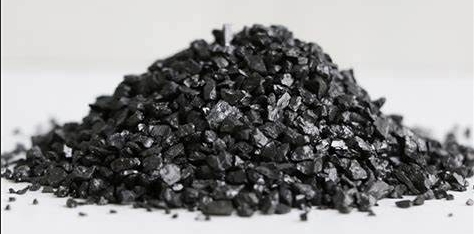
Anthracite-based carbon is used in low-impact manufacturing. This market is flourishing at the nexus between industrial progress, energy transition, and sustainability. Carbon additives derived from anthracite can help steelmakers optimize their processes while reducing energy consumption. Carbon-intensive industries benefit from the high-quality, low-volatility of anthracite. Anthracite has a vital role to play as an alternative fuel source for power generation in the global shift towards cleaner fuels.
Anthracite coal is a compact, hard form of coal. It produces more energy in fewer units of volume than bituminous coke. This makes it one of the cleaner and most efficient coals. It's also less polluting and requires significantly less water to wash than other types of coal when used in a power plant. Anthracite's uses are many, but its importance is primarily in the power generation industry and in the activation of carbon.
Because of its low volatile matter content and dense structure, anthracite has a number of distinct properties that make it ideal for water treatment. Anthracite filters are used by many municipalities to remove sediments in drinking water. This unique feature allows municipalities to reduce their operating and maintenance expenses by reducing the amount of backwashing. The anthracite filter media's physical properties also help extend their life by allowing them to be cleaned more thoroughly without having to replace them frequently.

Anthracite, a coal type similar to bituminous coke, has a lower volatile content. It is mined around the world and has a wide range of uses. These include as an energy resource, in the production of carbon and in metallurgy. During the UK's industrial revolution, in the late 19th century anthracite served as the main fuel for steam locomotives and railroads. Anthracite is still used today as a fuel, but the focus has shifted to renewable energy sources in order to reduce carbon emissions and combat climate change.
Although anthracite remains a viable source of energy, it is not as popular today as it used to be due to the increased emphasis on environmental protection and clean air. Although it is used extensively in metallurgy.
The main driver of the anthracite industry is the demand for GCA (calcined anthracite), which is manufactured from standard grade anthracite through gas-fired ovens. This process reduces the ash content of the anthracite and increases its carbon concentration, making it suitable for carbon additives in steelmaking. GCA is used by other industries who require carbon-rich materials for charging.
The future of anthracite is determined by global trending that encourages sustainable industrial practices. As these trends shape the global energy economy, anthracite will continue to be a crucial ingredient in many industrial processes and serve as a viable alternative to fossil fuels.

Write a Message